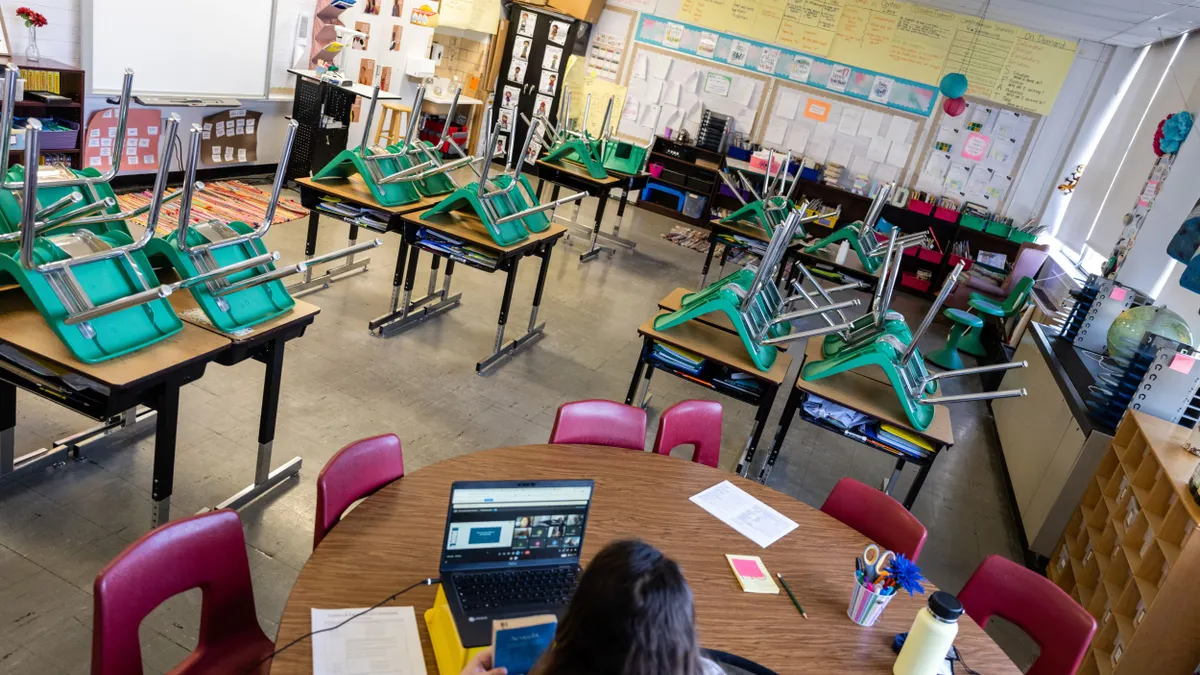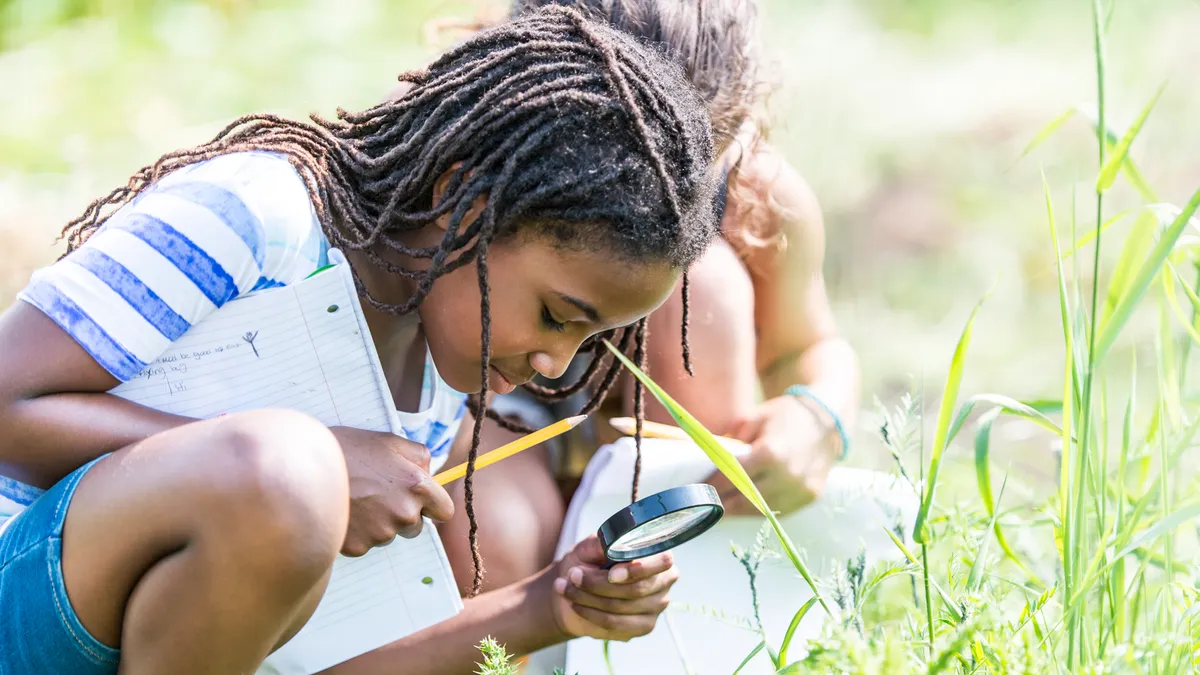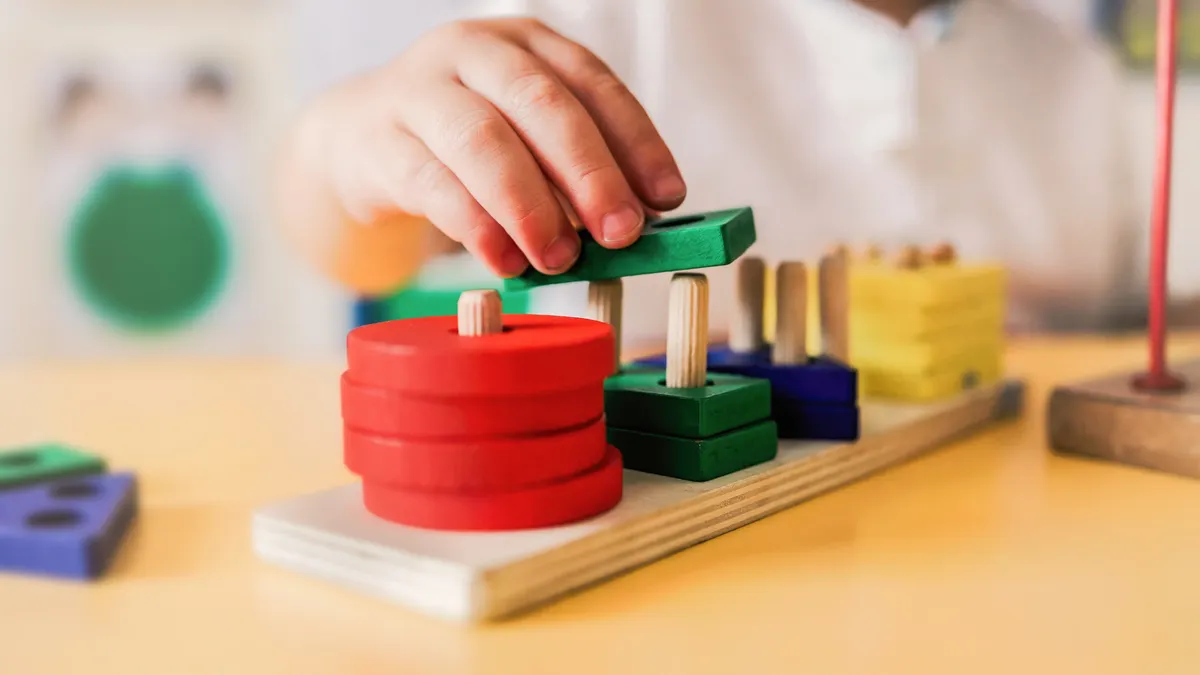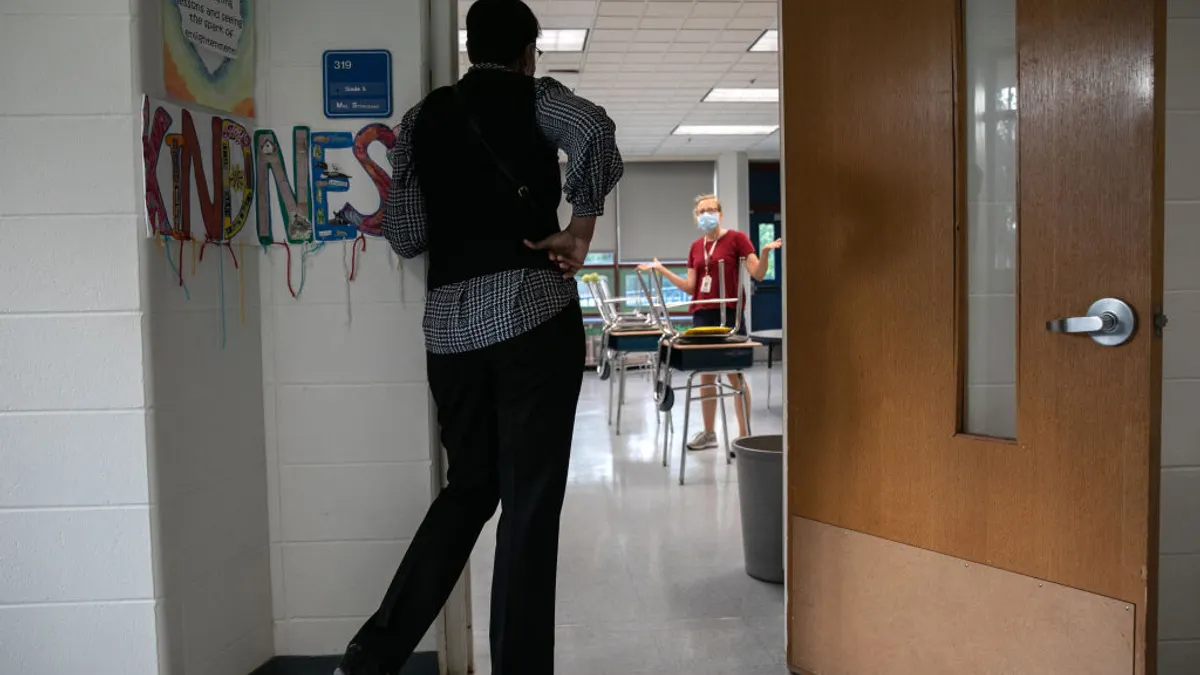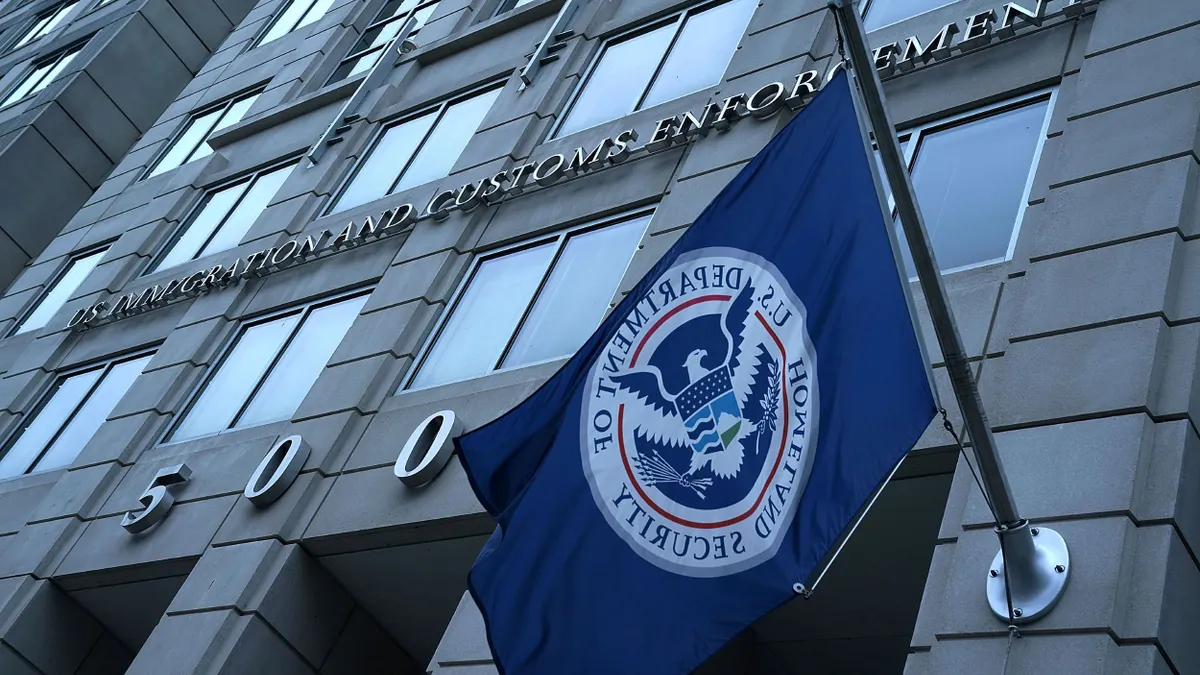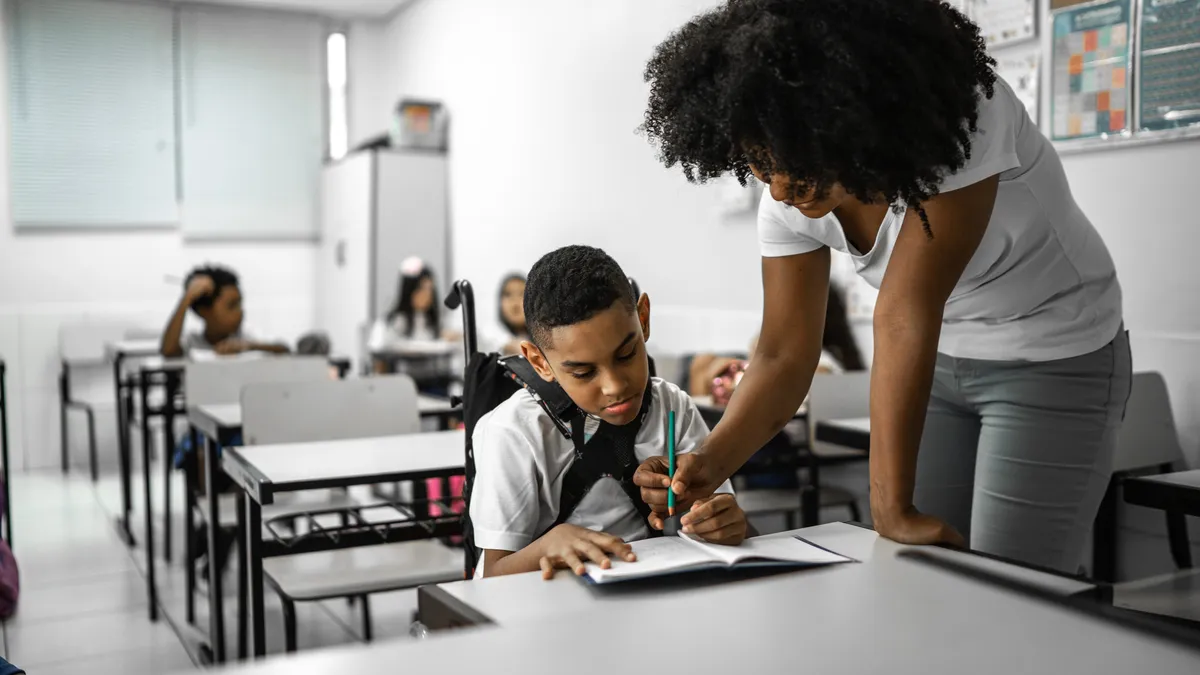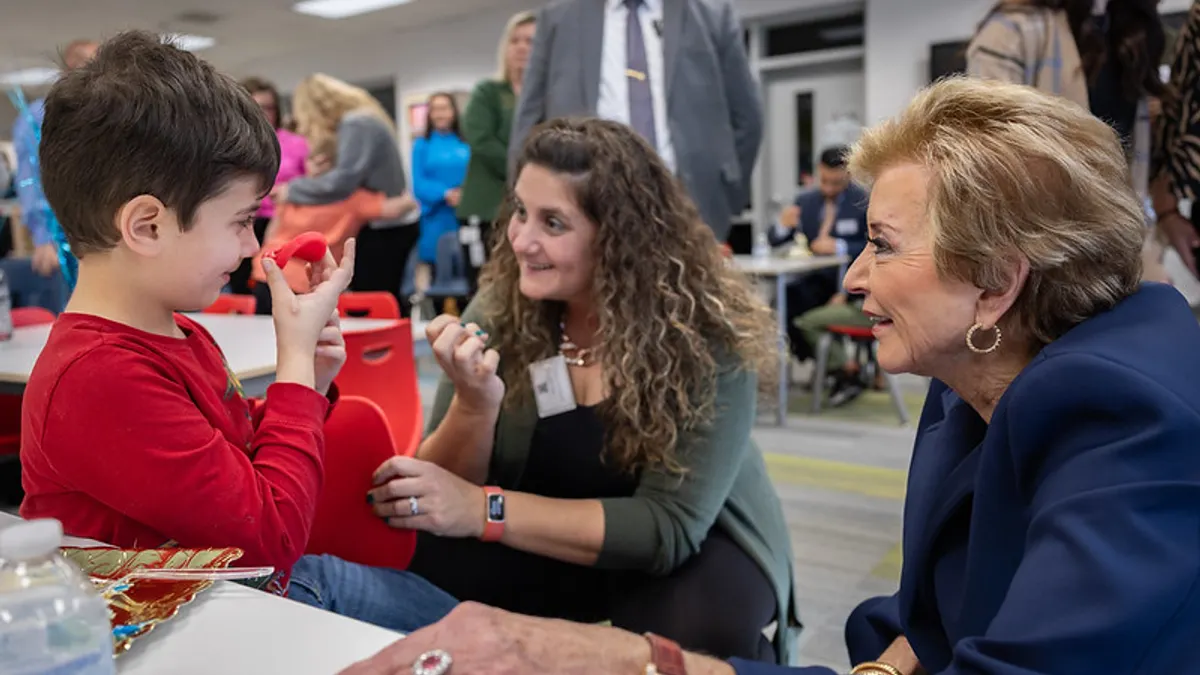Developing entrepreneurial skills not only gives students options for their futures — it also helps them perfect real-life skills, including problem solving, critical thinking, teamwork and resilience.
Participating in an entrepreneurship education and training program increases the probability students will start a business and derive higher income compared to students who didn’t participate in the program, according to a 2015 study published in the Journal of Economic Behavior & Organization.
That is especially important for students who experience barriers to participating in the economy, including BIPOC, Native American, low-income and rural youth, according to the Aspen Institute Forum for Community Solutions, which launched the Youth Entrepreneurship Fund in 2017. The fund aims to promote racial and economic equity and justice by ensuring these youths are given opportunities and tools to develop an entrepreneurial mindset and the skills necessary to succeed in the modern workforce.
To learn more about what’s working, we spoke with two educators to learn how their programs are encouraging students to develop an entrepreneurial mindset.
Saying ‘YEP’ to action-based learning and small, diverse teams
Teaching entrepreneurship should rely on action-based learning, said Audrey Shapiro, cofounder and program director for the Young Entrepreneurs Program, or YEP, for high school students.
“I feel like this is a general theme in education, but I think it’s especially important for this,” Shapiro said. “So much of entrepreneurship is going for it — it’s one thing to learn about it conceptually, and it’s another thing to do it.”
YEP has chapters at Brown University, the University of California, Berkeley, and Yale University — the latter for middle school students. More than 250 students have graduated to date, and new chapters are launching in January at University of California, Los Angeles, Clark Atlanta University, University of Rhode Island and University of New South Wales in Australia, Shapiro said.
YEP’s model has proven to be effective, and can easily be replicated by other entrepreneurship-focused programs, she said.
The program’s middle and high school participants meet once a week for two hours for six weeks. Each session’s first hour is an interactive lesson about entrepreneurial skills, such as problem identification, solution ideation, business planning, pitching and more. The sessions are sprinkled with activities that allow students to practice each skill, Shapiro said.
During the second hour, students work to apply those skills to an entrepreneurial endeavor they develop over the course of the program, she said. The program eventually culminates in a “pitch night” where students deliver a pitch about their venture idea.
“We believe that students learn (entrepreneurship) by doing,” Shapiro said.
The majority of YEP participants come from under-resourced schools and communities, Shapiro said. Each session is capped at 20 students, who typically are divided into five teams of four who work together on an entrepreneurial project.
Each group is as diverse as possible, Shapiro said, and leaders try to ensure students don’t know each other and have complementary interests and skills. YEP also offers a “Day of Entrepreneurship” event open to the community that typically attracts about 60 students, she added.
Prioritize inclusivity
It's imperative to also afford opportunities to students with disabilities, said Laurilie Keay, director of the K-8 Alma Fuerte Public Charter School in Pasadena, California, where entrepreneurship is a key component of the curriculum.
Some 27% of Alma Fuerte’s nearly 150 students are in special education classes, all of them integrated in general education classrooms.
“We really push to make sure the lessons and the skills are targeted to each individual student as best we can, and it’s been working,” she said. For example, one success story involved a student with a speech impediment who ended up helping to sell student-made soap at a local farmers’ market by announcing “soap for sale” to the market-goers, she said.
Alma Fuerte intentionally teaches empathy to create an environment that encourages “true acceptance,” so all students have the mindset of helping others whenever possible, Keay said.
Let students come up with their own ideas
YEP encourages students to explore and research problems in their own communities, and come up with sustainable solutions, Shapiro said. “We like to think of entrepreneurship not as, ‘What’s your million-dollar idea?’ but, ‘What’s the billion-dollar problem you want to solve?’” she said.
YEP graduates have developed real-life, ongoing ventures like a program that provides free robotics education for middle schoolers, Shapiro said. Other venture ideas include a a storage unit for backpacks on school buses and a recycled jewelry business that used sanitized neighborhood litter as material.
Entrepreneurship resonates with children because it has so many components, including writing, building and public speaking, Keay said. “With a little bit of prodding, everyone can find their niche,” she said.
Alma Fuerte students have held classroom markets where they can earn “Fuerte Bucks,” the school’s mock currency, by selling their own products to fellow students and their parents. Students have sold perfume samples from magazines and, before the COVID-19 pandemic, homemade hand sanitizer. The school also purchased supplies for them to make and sell soap, said Adriani León, the school’s director of operations.
Last year, the school invested in a makerspace, supervised by a new staff member and equipped with materials for robotics, digital design, heat press, arts and crafts, candle-making and more.
“[Students] come to me every day asking if they can start their business,” Keay said. “We’ve had really interesting conversations, where I ask, ‘Why should I let you? What are you offering that somebody else isn’t offering?’ And they come up with answers and their own business plan.”
At one point, the entire 3rd grade set up, during recess, a salon offering services like hand massages, hair braiding and nail painting, Leon said. Students outlined the salon’s floor plan with playground blocks and created waiting, service and checkout areas staffed by greeters, cashiers, nail and hair technicians, and even security, she said.
The opportunity to earn “Fuerte Bucks” also has become an incentive for children with challenging behaviors to behave more positively, Leon added.
Rely on the experience of volunteers
YEP was borne out of an unfilled need to teach entrepreneurship to high schoolers, which many schools, particularly those that are underfunded, can’t tackle, Shapiro said. She was an undergraduate at Brown University when she tutored young students in the local area and realized many wanted to learn about entrepreneurship, which led to YEP’s founding, she said.
YEP has an all-volunteer staff and guest speakers, such as local business entrepreneurs, professors and student experts. Such guest speakers are often an untapped resource for schools and can help teachers develop and deliver entrepreneurship curriculum for their students, she said.
Each YEP chapter gets funding from its local university, mainly for t-shirts and meals, “because there is nothing worse than hungry students,” Shapiro added.
It’s essential for everyone involved in teaching entrepreneurship to encourage students to acknowledge, and even welcome, any obstacles in launching their endeavors, Shapiro said.
“You have to acknowledge that it didn’t go as planned and emphasize that having a bump in the road is one of the keys to success,” she said. “Show them that this is an opportunity to learn, and help them figure out how to pivot.”






